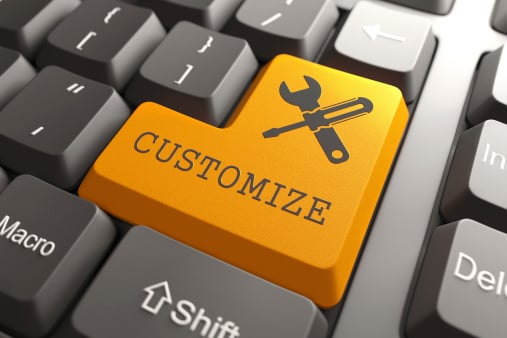 Consumers are increasingly aware of personalized and customized web content, and the statistics show the reception is overwhelmingly positive. Personalization is a key part of building a relationship with consumers that lasts. A static ecommerce site that does little to engage visitors and make them feel special will likely be left behind in favor of similar companies that take the time to reach out to customers with personal touches.
Consumers are increasingly aware of personalized and customized web content, and the statistics show the reception is overwhelmingly positive. Personalization is a key part of building a relationship with consumers that lasts. A static ecommerce site that does little to engage visitors and make them feel special will likely be left behind in favor of similar companies that take the time to reach out to customers with personal touches.
Doing so requires a certain amount of information from consumers, but you’ll find contact information and names aren’t so hard to collect. In fact, if a buyer knows that information will be used to further personalize his or her shopping experience, they are more likely to hand it over. Of course, there is also the danger of crossing the line from friendly territory right into creepy.
If you’re not sure what’s necessary and acceptable as far as personalization goes, consider the following five must-haves. From there, you can create your own personalization plans.
Welcome Back
Cookies and website account information make a simple welcome back message the easiest of all the personalization techniques. By greeting customers by name, you show them you remember their previous visits and prepare them for other customized services during their search on your site.

Of course, to get this information, you’ll have to offer up a chance for customers to enter personal information. Cookies can only go so far, so your CTAs have to pick up the slack. Be sure you make those opportunities to share information clear to your visitors. One great way to ensure site registration is to offer special incentives to members only. With the promise of discounts and first looks at new products, people will clamor to sign up.
Suggestions
By using cookies, you can also keep track of the items your customers view. This information can be used to offer suggestions on future visits. The personal touch offered is something buyers will definitely remember. Amazon has the technique down to an art, but other sites manage quite well, too. Whether you offer these suggestions in a special section on the site or simply offer suggested items first after a search, buyers will appreciate seeing the products that fit their particular tastes without having to waste time on the items that don’t interest them.

Request for Information
When a simple email and browsing history just aren’t enough to gather the information you need, don’t be afraid to ask for it. You can simply say “tell us what you want to see,” or you can be crafty with wish lists or upvotes. You might be amazed how much information people are willing to give you if they know you're going to use it to improve their experience.

Give buyers the chance to express their opinions on the items on your site. Their reactions will help you better determine the products to display first upon their next visit.
Shopping Cart Reminder
A shopping cart reminder is a great way to close the sale. Sometimes shoppers place items in their carts and then get distracted by further shopping. A gentle reminder that they planned to buy something could be all you need to prompt a purchase.

If the lightbox reminder doesn’t do the trick, have automated emails ready to go. These should feature an image of the products that were nearly purchased as a way to remind customers which items they loved.
Request for Reviews
Allowing customers to put their mark on your ecommerce site in the form of reviews is a great way to personalize the experience. They will relish the chance to share the good and the bad, whether it’s about the products or the service. Be sure not to censor those reviews. Future customers will appreciate your honesty and be encouraged to share their own experiences.

Each of these parts add up to a stellar personalized ecommerce site. With some experimentation, you can come up with the perfect combination for your company, your products, and most importantly, your customers.



